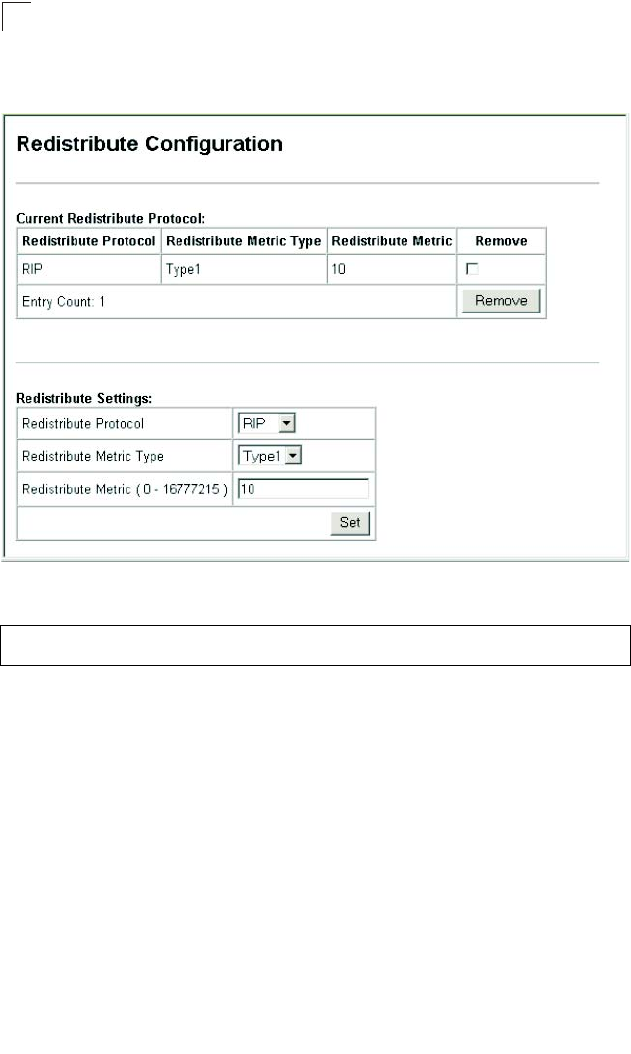
Unicast Routing
20-36
20
Web - Click Routing Protocol, OSPF, Redistribute. Specify the protocol type to
import, the metric type and path cost, then click Add.
Figure 20-14 OSPF Redistribute Configuration
CLI - This example redistributes routes learned from RIP as Type 1 external routes.
Configuring NSSA Settings
Use the OSPF / NSSA Settings page to configure a not-so-stubby area (NSSA), and
to control the use of default routes for ABRs and ASBRs, or external routes learned
from other routing domains and imported through an ABR. (For a detailed
description of NSSA areas, refer to “Configuring OSPF Areas” on page 20-19.)
Command Attributes
• Area ID – Identifier for an not-so-stubby area (NSSA). The area ID must be in the
form of an IPv4 address.
• Default Information Originate – An NSSA ASBR originates and floods Type-7
external LSAs throughout its area for known network destination outside of the AS.
However, you can also configure an NSSA ASBR to generate a Type-7 “default”
route to areas outside of the AS, or an NSSA ABR to generate a Type-7 “default”
route to other areas within the AS. (Default: Disabled)
An NSSA is similar to a stub, because when the router is an ABR, it can send a
default route for other areas in the AS into the NSSA using the Originate Default
Console(config-router)#redistribute rip metric-type 1 42-25
Console(config-router)#


















